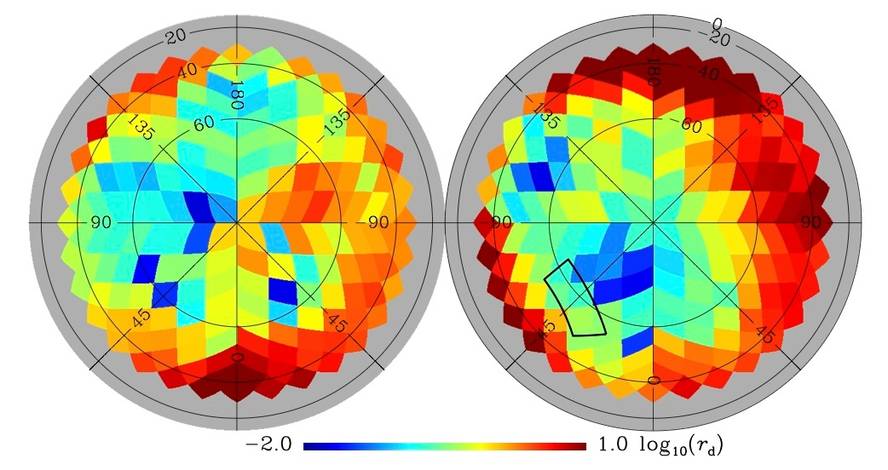The results of the Planck mission question the signal considered as proof of cosmic inflation

ESA has released the research expected by many astrophysicists: Map of the interstellar dust of the Planck mission. This map shows the polarization generated by the dust and there was a lot of expectation to see if Planck's data matched those of the BICEP2 telescope. In fact, the data obtained through this telescope showed a signal considered as proof of cosmic inflation. However, Planck's results indicate that this signal may be generated by dust.
BICEP2 results were reported in March. Although they remembered the convenience of being cautious until confirming the results, a great stir arose. In fact, it was no less: if the results were correct they would be a sign of the gravitational waves after the Big Bang, which would confirm what was foreseen by the theory of inflation.
However, the data collected by the radio telescopes of the Planck mission show that the polarization generated by dust in the area analyzed by the BICEP2 is superior to that of the BICEP2. Therefore, the signal considered by BICEP2 as a gravitational wave footprint may not be significant.
However, Planck and the BICEP2 have performed the detections at different frequencies, extrapolating the data to be able to compare the results of both. Therefore, they do not have enough strength to cancel the BICEP2 data.
Nevertheless, some experts have suspected from the beginning that the consequences of BICEP2 were not correct. According to cosmologist Jon Urrestilla, for example, “the magnitude of the detected signal was too high compared to that expected. In fact, there are several experiments designed to find gravitational waves and they all look for smaller quantities.”
So Urrestilla hasn't been surprised to see Planck's results: “Before those of Planck have gone out another couple of investigations, demonstrating that BICEP2 could explain the dust, and now Planck has reinforced this suspicion.” However, he wanted to make it clear that the incorrectness of the BICEP2 results does not mean that the inflation theory is wrong. “If what Planck says is true, we are in a situation prior to knowing the results of BICEP2, that is, pending testing the theory,” he said.
The results of the joint investigation conducted by BICEP2 and Planck have been announced for November and the case may be clarified.





